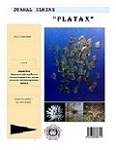Test of Larvacide Activity from Some Sponge Extracts to Aedes aegypti Larvae
DOI:
https://doi.org/10.35800/jip.6.2.2018.20637Abstract
Marine organisms have been known produce certain compounds those could lead for medicine purposes. Sponges are one and the most studied for this aim. oneof the important biological activities which expected from sponge are larvacide activity. The aims this research was to test the larvacide activity aagainst Aedes aegypti larvae from some of sponge extract. Sponge samples were taken from Malalayang Waters, (N 01 ° 27'37 "E 124 ° 47'30") on November 2014 with the depth varies from 2-15 m with SCUBA. The extraction, preparation of the larvae and activity testing was performed on Biomolecular and Marine Pharmacy Laboratory Faculty Fisheries and Marine Science. The sponge samples were cutted and soaked in 95% Ethanol for over night with 3 repetitions to obtain ethanolic extracts. The extract were filtered and evaporated using freeze dryer then tested onto 10 instars 3 instars m larvae that had been previously maintained. the test was made in triplowith 24 hours observation. abate was used as positive control while negative control clean water was used.The test results showed that of 11 Sponge tested, 10 species showed larvacidal activity and marine sponge extract Tedania sp. has the highest activity compared to 9 extracts. As a suggestion of this research the further purification of Tedania sp. extract is needed to know the structure of active compound.
Keywords: Aedes aegypti, Larvacide, Sponge extract
ABSTRAK
Organisme laut yang dapat dikembangkan menjadi bahan sediaan obat antara lain sponge, dan merupakan salah satu organisme laut yang banyak diteliti. Beberapa aktivitas biologis penting yang diharapkan dari ekstrak sponge salah satunya adalah aktivitas larvasida. Penelitian ini bertujuan untuk menguji aktivitas larvasida nyamuk Aedes aegypti dari beberapa ekstrak Sponge. Sampel sponge diambil di perairan Malalayang, tepatnya di koordinat N 01°27’37†E 124°47’30†pada bulan November 2014 di kedalaman 2-15 m. Sedangkan untuk tahap ekstraksi, penyiapan larva uji dan pengujian aktivitas larvasida di lakukan di laboratorium Biomolekular dan Farmasitika Laut program studi Ilmu Kelautan, FPIK UNSRAT. Dalam penelitian yang dilakukan, sampel diambil di perairan menggunakan peralatan SCUBA. Setelah itu diekstrak dengan larutan etanol 95% dan direndam selama 24 jam dan dilakukan 3 kali pengulagan untuk mendapatkan ekstrak etanolik. Sampel dikeringkan dengan menggunakan alat freeze dryer kemudian diujikan ke 10 ekor larva nyamuk fase instar 3 yang telah dipelihara sebelumnya. Pengujian dilakukan sebanyak 3 kali pengulangan dengan lama pengamatan 24 jam pengamatan. Sebagai kontrol positif digunakan bubuk abate yang biasa dijual di pasaran sedangkan kontrol negative atau tanpa perlakuan digunakan air bersih. Data hasil pengamatan diolah menggunakan Microsoft excel.Hasil pengujian menunjukkan bahwa Dari 11 Sponge yang diuji, 10 jenis menunjukan aktivitas larvasida dengan persentase mortalitas yang bervariasi dan ekstrak sponge laut Tedania sp. memiliki aktivitas tertinggi dibandingkan dengan 10 jenis ekstrak sponge lain dalam pengujian. Sebagai saran dalam penelitian ini yaitu Perlu dilakukan pemurnian lanjut ekstrak lebih lanjut dari ekstrak sponge Tedania sp. yaitu ke tahap partisi dan Perlu adanya variasi konsentrasi dalam pengujian.
Kata Kunci : Aedes aegypti, Larvasida, ekstrak SpongDownloads
Published
How to Cite
Issue
Section
License
COPYRIGHT
Authors who publish with this journal agree to the following terms:
Authors hold their copyright and grant this journal the privilege of first publication, with the work simultaneously licensed under a Creative Commons Attribution License that permits others to impart the work with an acknowledgment of the work's origin and initial publication by this journal.
Authors can enter into separate or additional contractual arrangements for the non-exclusive distribution of the journal's published version of the work (for example, post it to an institutional repository or publish it in a book), with an acknowledgment of its underlying publication in this journal.
Authors are permitted and encouraged to post their work online (for example, in institutional repositories or on their website) as it can lead to productive exchanges, as well as earlier and greater citation of the published work (See The Effect of Open Access).




















